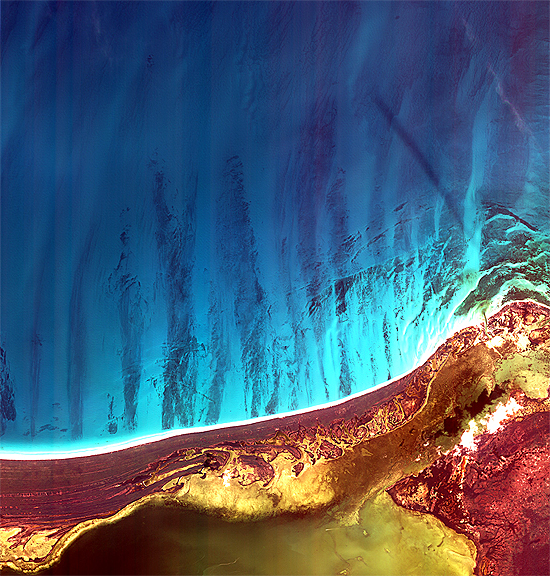Holbox is a 42-km-long island running along the peninsula’s coast that is separated from the mainland by Yalahau Lagoon. One of the world’s most important ecosystems, Holbox and its surrounding waters are part of the Yum Balam Biosphere Reserve. Its unspoiled beaches of fine white coralline sands are important for turtle nesting, and over 500 bird species can be found here. Caboe Catoche, the cape at the eastern tip of the island (right), is where the Gulf of Mexico and the Caribbean Sea meet. Their mingling waters create a kaleidoscope of turquoise and emerald hues. Located where the currents of the Gulf, Caribbean and the Atlantic Ocean mix to create nutrient-rich waters, this area supports an abundant and diverse array of marine life. In addition to dolphins, manta rays and several shark species, the plankton-rich waters support the world’s largest known congregation of whale sharks – our planet’s largest fish – for five months of the year.

Holbox Island and the Yalahau Lagoon on the northeast corner of Mexico’s Yucatan Peninsula are featured in this image, acquired by the Korea Multi-purpose Satellite (Kompsat-2) of the Korea Aerospace Research Institute (KARI). ESA supports the Kompsat series as a Third Party Mission, meaning it uses its ground infrastructure and expertise to acquire, process and distribute data to users. Credits: KARI
The freshwater lagoon has a deep rocky hole that surrounds the island, making the water appear black. It is thought that Holbox, which in Mayan translates as ‘black hole’, was named after the dark lagoon water. The Korea Multi-purpose Satellite (Kompsat-2) of the Korea Aerospace Research Institute acquired this image on March 12th. Launched in 2006, it was developed to ensure continuity with its predecessor, Kompsat-1. ESA supports the Kompsat series as a Third Party Mission, meaning it uses its ground infrastructure and expertise to acquire, process and distribute data to users.

